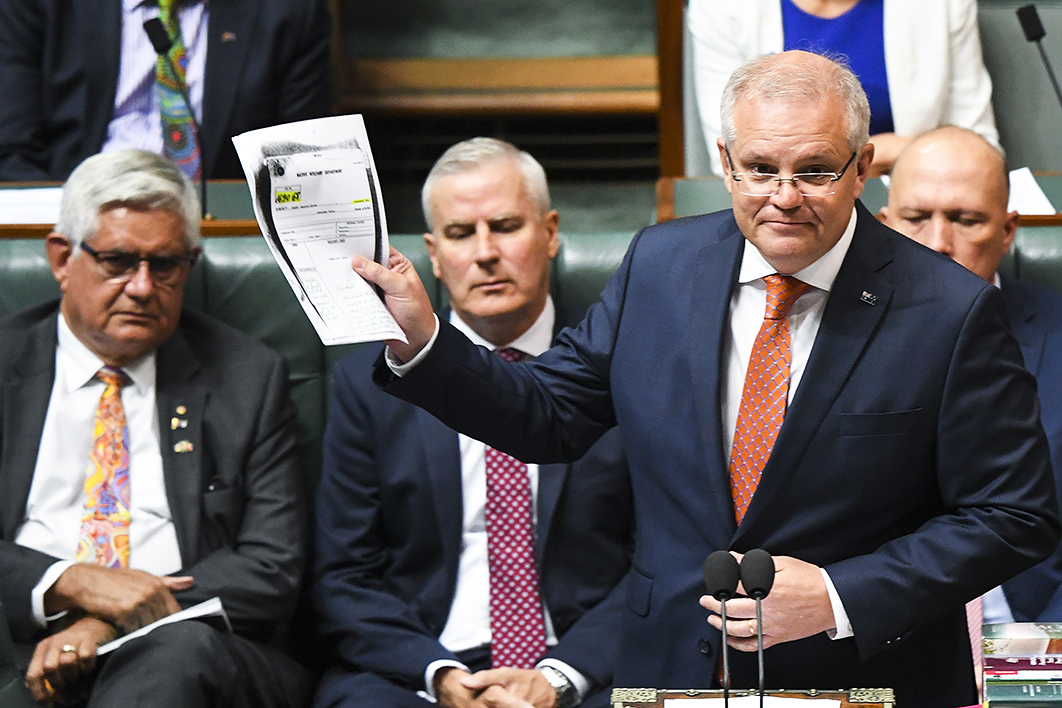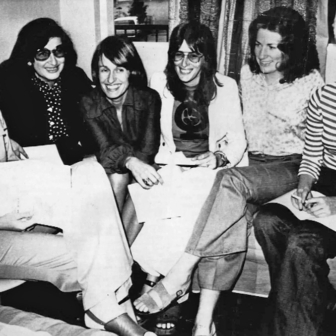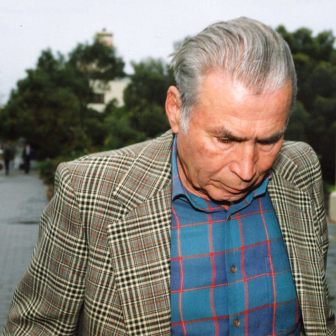The disconnect between the presentation of Closing the Gap reports — more pages, lots of graphs, lots of photos — and their findings has been growing. This year’s genereously illustrated 104-page report, the twelfth, makes clear that only two of the program’s seven targets can be met, and the gap is becoming a chasm.
Presenting the report to parliament yesterday, prime minister Scott Morrison described it as a “stark and sobering” tale of “hope, frustration and disappointment.” He said something very similar last year, calling out the failure of the current approach and the hubris of those who had created it.
Yet the past year has not only seen problems go unresolved, it has also seen considerable progress in some areas — and enough of each to generate both scepticism and optimism.
The basis of the optimism is the December 2018 commitment by the Council of Australian Governments, or COAG, to partner with Indigenous people in refreshing the Closing the Gap framework and creating a forum for ongoing engagement. The formal partnership agreement between COAG and the National Coalition of Aboriginal and Torres Strait Islander Peak Organisations (Coalition of Peaks) came into effect in March last year.
Since then, a series of community consultations has considered how this new partnership might work. In January, the Coalition of Peaks released its Community Engagement Snapshots report, which found strong support for the three reform priorities it had proposed: developing formal partnerships between government and Aboriginal and Torres Strait Islander people to close the gap, boosting community-controlled services, and improving mainstream service delivery. A fourth reform priority — local data projects led by local communities and organisations — will be sent to COAG.
The Indigenous leaders engaged in this process are feeling optimistic that a full partnership approach can show the way forward. But their view is offset by the prime minister’s refusal to commit to an Indigenous recognition referendum until “there is consensus,” a position at odds with his commitment to the beginning of a “new era.” It will be hard for Indigenous people to trust the government to deliver a new approach when it consistently sidelines the work of the Referendum Council and the central importance of the Uluru Statement from the Heart.
How can Closing the Gap be improved? Fully recognising that their validity is limited by my non-Indigenous status and a lack of formal consultation, these are a few thoughts.
In policy terms, the focus must be on the key underlying causes of disadvantage.
First, racism. The lack of progress on this key determinant of the physical and mental health of Indigenous Australians may explain part of the unremitting gap in health and socioeconomic outcomes. Tackling and reducing racism, including ensuring that healthcare is culturally safe and respectful, should be an integral part of policies and interventions aimed at improving Indigenous health, especially that of children.
Second, very high rates of Indigenous incarceration are, in the words of a recent PwC report, “unfair, unsafe and unaffordable.” Inappropriate imprisonment and the failure to ensure needed post-release services lead to loss of culture, identity and connection to the land, aggravating the cycle of disadvantage and poverty. A new justice target is part of the refresh of the Closing the Gap framework, but if it is to be effective then the courts, police, corrections services and social services will all need to adopt its principles.
Third, safe and secure housing is key to the health, wellbeing, safety and dignity of Indigenous Australians. A new report from the Australian Institute of Health and Welfare found that in 2016, 29 per cent of Indigenous Australians were living in a dwelling with major structural problems, with 15 per cent of households lacking at least one basic facility (a functioning kitchen, bathroom, laundry or toilet). The proportions are higher in remote areas.
In focusing on these three areas, the government must commit to a real and enduring partnership with Aboriginal and Torres Strait Islander communities and organisations. Despite the rhetoric, the Morrison government’s commitment to consultation has generally been deficient.
Not long after the last election, the prime minister announced a new National Indigenous Australians Agency within his own department. Indigenous affairs minister Ken Wyatt described it as a “new era of co-design and partnership,” but the decision was made without consulting Indigenous groups. Meanwhile, the National Congress of Australia’s First Peoples lost its funding and the government persisted with its expansion of the cashless welfare card in Indigenous communities.
The decision to double down on the cashless card came despite growing evidence that it is adversely affecting many lives, has failed to get users into jobs, and is opposed in many communities. Many people subject to the card feel they have been punished by a loss of control over their own finances. This blanket imposition of a political ideology backed by very little evidence is completely counter to a partnership approach.
Another consultation-free act was the axing of funding for the secretariat that oversees the thirteen-member National Family Violence Prevention and Legal Services Forum. This annual $244,000, a tiny outlay for government, was justified by reference to an independent evaluation that, on the contrary, recommended increased resourcing.
And on the day Scott Morrison was promising a new approach to Closing the Gap, it was rumoured that the government had taken a unilateral decision to end funding of Indigenous housing — a dismayingly plausible possibility that highlights how little attention is paid to the social determinants of health.
These various government decisions also highlight the lack of coordination across departments and agencies. When prime minister Tony Abbott moved responsibility for the majority of Indigenous programs to the prime minister’s department in 2014, under the rubric of the Indigenous Advancement Strategy, the shocking news that he also cut more than $500 million from the programs hid the fact that the move might facilitate a whole-of-government approach to tackling Indigenous problems.
That has never come to pass — and it still doesn’t happen even within portfolios. Hearing loss, trachoma and rheumatic heart disease, for instance, all involve a similar healthcare approach (cleanliness) for prevention, yet these conditions continue to be tackled under a series of separate programs. Their high incidence in Indigenous communities won’t be reduced without a coordinated effort to improve housing.
“Every minister in my government is a minister for Indigenous Australians,” the prime minister declared yesterday. Given the known occasions on which the real Indigenous affairs minister, Ken Wyatt, has been sidelined (the referendum, for instance), Indigenous communities will need some convincing on this point.
They will also be looking for evidence that programs are introduced — and evaluated — where they are needed. Here, the signs haven’t been good. A June 2019 report from the Australian National Audit Office identified delays in evaluating the five-year-old Indigenous Advancement Strategy. The prime minister’s department had not met guidelines, the report said, and nor had the department kept records of key decisions or set targets for all programs and projects.
In October 2019, the new National Indigenous Australians Agency released an equally, if not more, damning report on the past ten years of Closing the Gap. (Oddly, the date on the report is March 2018, more than a year before the agency was established.) Among its findings were three fundamental criticisms. Cultural determinants are not captured in the policy framework, which makes collaborating with Indigenous Australians difficult. The evidence base to support many programs is lacking or weak, and programs are rarely evaluated. And the effort to close the gap has been hampered by inconsistent political leadership, constantly changing policies, insufficient resources, and workforce and funding cuts.
Finally, the funding maze needs to be streamlined and made more transparent. Organisations and communities deal with a level of complexity and “red tape” that would never be tolerated by the general business community, with the evidence suggesting that some Aboriginal health services are juggling forty or more funding sources with separate application and reporting requirements. Too often communities are unaware of services for which they are eligible.
A 2016 study identified 1082 separate Indigenous-specific programs. Less than one in ten had been evaluated, and most have produced little evidence of effectiveness. Multiple service providers often compete in the same communities (assuming there are providers), and duplication and waste are rife.
The impact of funding conditions on the governance and performance of Indigenous organisations is under-researched. Evidence suggests that the public financing of Indigenous organisations is successful when the focus is on the organisation rather than the program. Funded organisations should always be required to be accountable to their constituents; performance indicators should be negotiated rather than imposed; achievements should be rewarded.
Encouragingly, the health department will introduce a new funding model for the Indigenous Australians’ Health Program’s primary healthcare program in July this year. Three-year funding agreements, annually indexed, will become the norm, and the administrative burden will be reduced.
Recent efforts by the Productivity Commission have gone some way to tackling the lack of transparency. Preparing an analysis for Oxfam in 2017, I found it very difficult to track spending on Indigenous programs on the basis of publicly available data. But I did find every indication that the government is increasingly looking to mainstream services and programs to meet Indigenous people’s needs, especially in non-remote areas. While 55 per cent of the programs funded under the Indigenous Advancement Strategy were run by Aboriginal and Torres Strait Islander organisations, 81 per cent of direct Indigenous expenditure went towards mainstream services.
Pat Turner, lead convenor of the Coalition of Peaks, has described the gap between Indigenous and non-Indigenous Australians as “a gaping wound on the soul of our nation.” This wound won’t be healed without the best efforts of all Australians. The prime minister is right to say that the Closing the Gap strategy has reinforced “the language of failing and falling short” and neglected to “celebrate the strengths, achievements and aspirations of Indigenous people.”
Refreshing the program must involve building on the expertise and wisdom of Indigenous individuals and communities and the abundant success stories that have largely been unrecognised and uncelebrated. The Oxfam report In Good Hands: The People and Communities Behind Aboriginal-led Solutions is just one of the many excellent places to start. •




